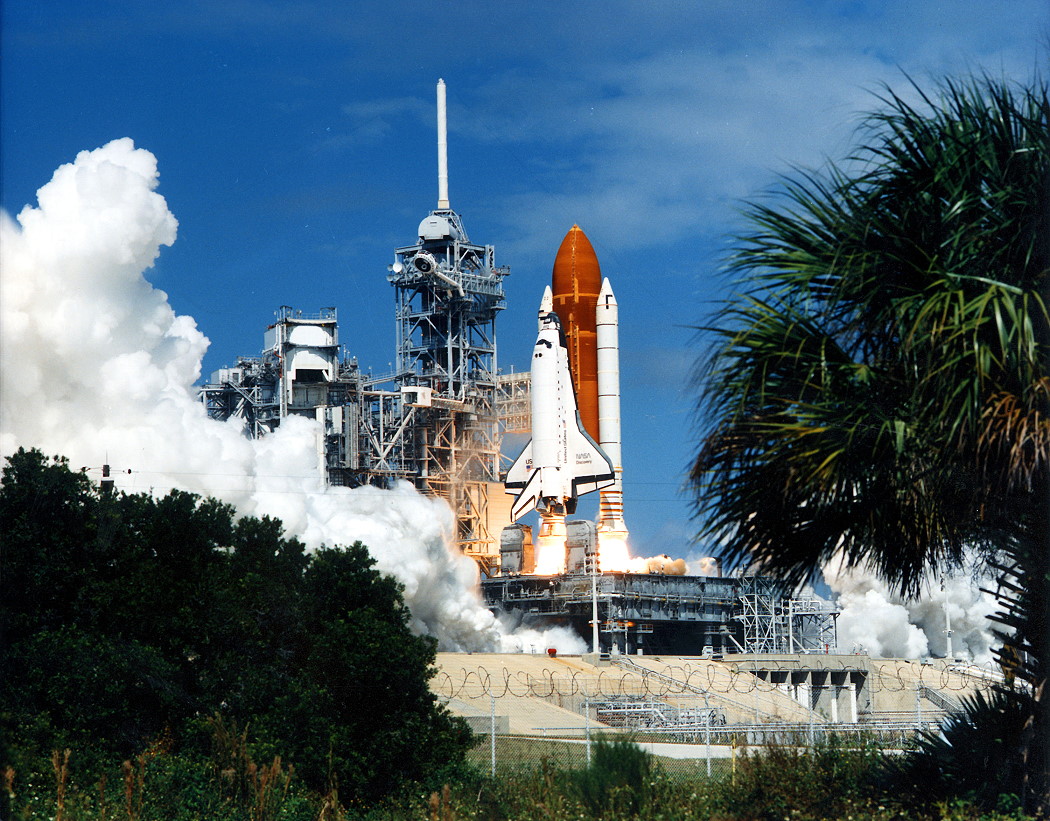
As America prepares for another “return to flight” next year—carrying astronauts to low-Earth orbit aboard Boeing’s CST-100 Starliner and SpaceX’s Crew Dragon—a moment of reflection should occur this weekend, as 30 years pass since the return to flight of the Space Shuttle Program (SSP) in the wake of the Challenger tragedy. Thirty-two months after seven astronauts were lost in the skies above Cape Canaveral, a crew of five rocketed into orbit at 11:38 a.m. EDT for a four-day flight which re-established the shuttle’s credentials, evaluated new hardware for the first time and passed a major hurdle in enabling the more complex missions which would follow.
Video Credit: NASA
STS-26, the 26th mission of the shuttle program and seventh for frequent-flying Discovery, would deploy a large NASA Tracking and Data Relay Satellite (TDRS) into orbit to permit communications between future astronaut crews and ground stations, as well as relaying data from major scientific spacecraft, including the Hubble Space Telescope (HST). Yet fundamentally, in the words of STS-26 Commander Rick Hauck, the main purpose of the mission “was simply to fly again”, after almost two years of introspection and public and political anger and uncertainty over the avoidable accident that Mission 51L had been. As outlined previously by AmericaSpace, the presidential inquiry into the loss of Challenger uncovered a string of cultural and managerial shortcomings, in addition to the root technical cause of the disaster, a cold-induced failure of O-ring seals within one of the twin Solid Rocket Boosters (SRBs).
In the months after Challenger, the SRBs were extensively redesigned by their contractor, Morton Thiokol, with a pair of full-scale, short-duration booster simulators—the Joint Environment Simulator and the Nozzle Joint Environment Simulator—used on multiple occasions between August 1986 and August 1988 to test, respectively, new field-joints, insulations and improved O-rings and the physical integrity of the joints between the nozzle and the main motor casing. In tandem, engineering tests in May 1987 validated SRB heaters, the performance of an additional, third O-ring and the capability of external graphite composite stiffeners to prevent the joints from rotating in flight. By early 1988, the process of recertifying the entire system for return to flight got underway.
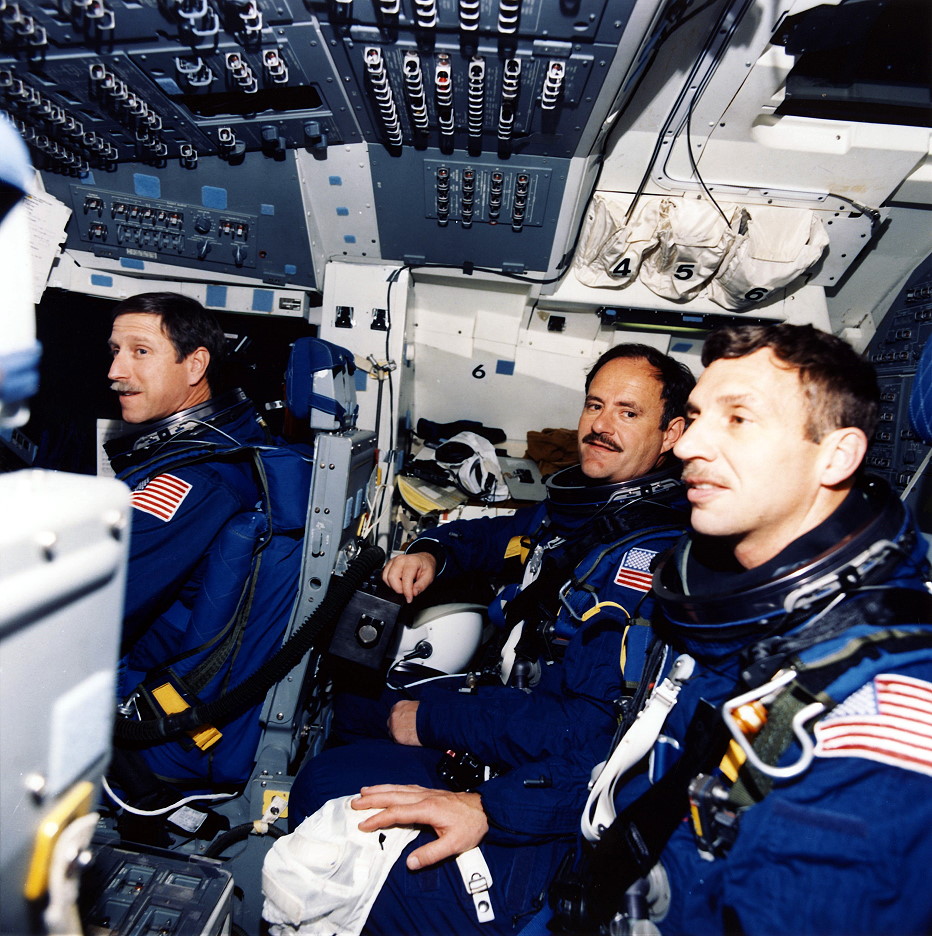
Although the boosters had been the “smoking gun” in Challenger’s demise, the 32 months were also spent tending to other issues with the shuttle itself, some considered more useful than others. The Space Shuttle Main Engines (SSMEs)—problems with which had triggered a pair of on-the-pad launch aborts and a high-altitude abort situation in the months before 51L—saw attention, as did the orbiter’s brakes and tires. A new escape system, for use under controlled flight conditions, was added, and future astronauts would wear partial-pressure suits, evolvable into fully-pressurized garments from 1994 onwards. In the words of STS-26 Mission Specialist Mike Lounge, however, the suits were “political eyewash” and he bemoaned them as adding weight, subtracting payload-carrying capability and serving no useful purpose in the event of a major in-flight emergency.
That said, the STS-26 astronauts at least provided some input into the color of the suits. “As they developed this idea of bailout,” reflected STS-26 Pilot Dick Covey, “the first suits they got were dark blue and the life rafts were black or dark blue.” Should the crew abort and ditch in the ocean, they would never be seen. “Well, if we’re going to do that,” reasoned Covey, “why don’t we have orange suits?”
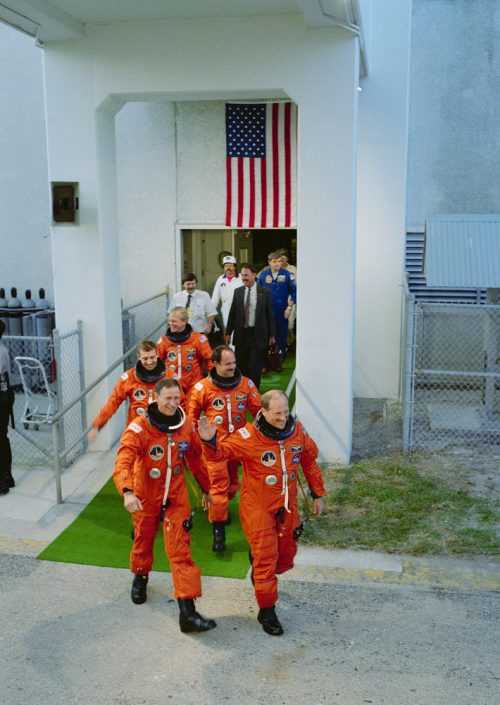
When the STS-26 crew of Hauck, Covey, Lounge and Mission Specialists Dave Hilmers and George “Pinky” Nelson were named, amid much fanfare, in January 1987, it was hoped that they might launch as soon as February 1988. Hauck, Lounge and Hilmers had been training with fellow astronaut Roy Bridges to deploy the Ulysses solar probe on Mission 61F at the time of the Challenger disaster. Bridges resigned from NASA, to return to the Air Force, and was replaced by Covey, whilst Nelson was recalled from an academic post to round out the crew at five.
Yet NASA intended to afford STS-26 all the caution which had accompanied STS-1, the first shuttle flight, and Discovery did not finally roll out to Pad 39B at the Kennedy Space Center (KSC) in Florida until 4 July 1988. Shortly before rollout, a tiny leak, deep inside the shuttle’s left-side Orbital Maneuvering System (OMS) pod was discovered, but was repaired on the pad. On 10 August, the three main engines were test-fired satisfactorily and the giant TDRS payload was later installed aboard Discovery. By now, launch was targeted for no sooner than 29 September, with a 2.5-hour “window” extending from 9:59 a.m. through 12:29 p.m. EDT.
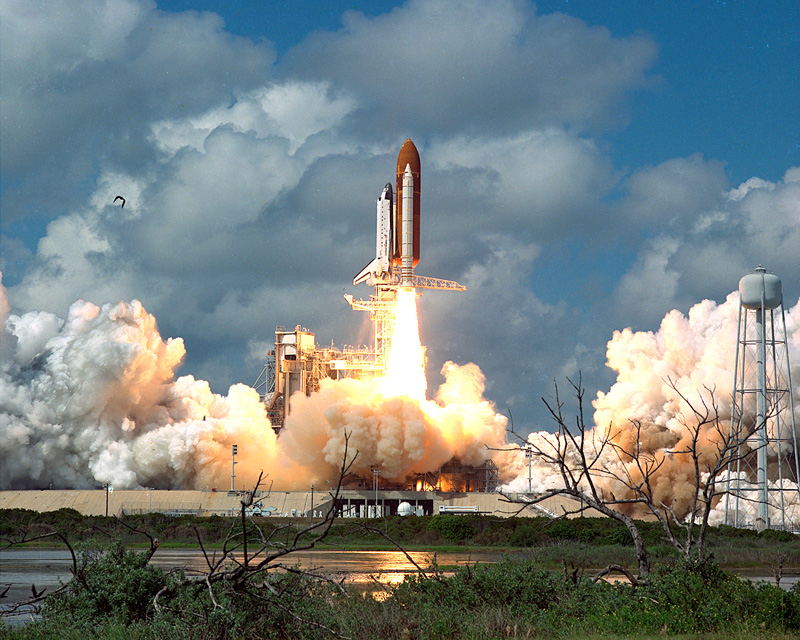
The day itself, 30 years ago, was calm and warm, which Hauck remembered lucidly. However, neither he or his crew confidently expected to fly that day, for radiosonde balloon soundings indicated upper-level wind conditions which might pose a constraint to launch. Although the flight software had been programmed for “fall” weather, with wind-speed estimates of 28-34 mph (45-54 km/h), conditions were far milder, at 11 mph (17 km/h) from the north-east, more akin to springetime. Reprogramming the shuttle’s computers to cater for this changeable condition would take two days. The likelihood of launching on 29 September 1988 seemed bleak. Yet the astronauts were awakened about 5 a.m. EDT, after which they showered, breakfasted and donned their partial-pressure suits. By this time, NASA was aiming to launch no less than one hour into the 2.5-hour window.
Not long before 8 a.m., to a peal of applause, the crew departed the Operations & Checkout (O&C) Building and headed for Pad 39B. At the pad, the closeout crew presented them with a number of “gag” bon voyage gifts, including a pair of expanding, goggle-eyed glasses, which served to diffuse some of the tension of the day. Aboard the orbiter, an unusual conversation occurred, when 3amp fuses feeding power to the cooling fan motors in Covey’s and Lounge’s suits failed. The fuses were replaced with what were thought to be 5amp fuses—as detailed in NASA’s post-flight anomaly report—and, although the fan motors performed nominally through ascent, ultimately turned out to be 10amp fuses. It was recognized that they would not adequately protect the wiring inside the fan motor assembly and the astronauts replaced all suit fan motor power fuses with verified 5amp fuses, which were part of the In-Flight Maintenance (IFM) kit.
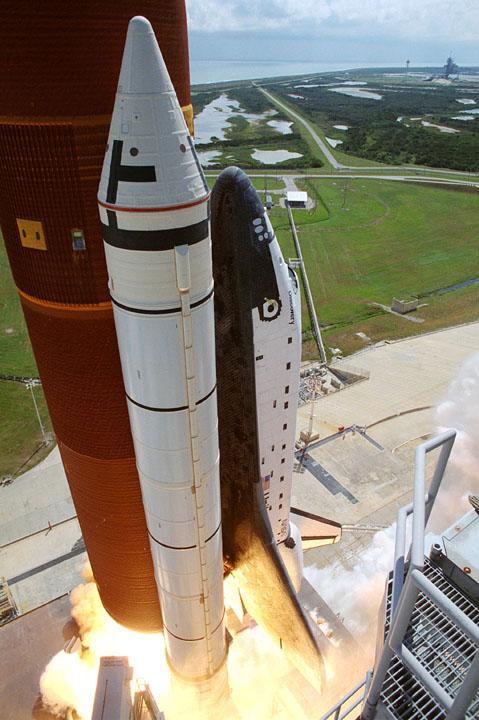
The fuse replacements were complete by 10 a.m., at which time the weather outlook started to brighten. Rick Hauck would later thank fellow astronaut Bob Crippen, then serving as deputy director of shuttle operations at NASA Headquarters and chair of the Mission Management Team (MMT), for convincing them that they likely wouldn’t launch, which allowed them to enjoy an otherwise beautiful morning. In fact, the Cape was alive with an estimated 250,000 spectators, together with around 2,500 media and contractor public relations representatives, the latter of which marked the second-largest in history, topped only by STS-1.
Finally, at 11:28 a.m. EDT, Launch Director Bob Sieck polled his team for their final status. As Hauck’s crew listened into the loop, they expected Crippen to declare a “No Go” on the basis of the high-level winds, but were surprised when he gave his consent for them to fly. Covey activated the shuttle’s Auxiliary Power Units (APUs) and at T-2 minutes—following a request from Hauck to do so a little later than planned—the astronauts closed their visors. A momentary glitch inside the final minute, which might have caused a hold in the countdown at T-31 seconds, ultimately proved groundless and the clock continued ticking away to T-0. However, the delay forced a long and uncomfortable wait for the astronauts, clad in the bulky suits and lying on their backs with legs elevated. “We were still using the urine-collection devices, and those aren’t particularly comfortable or easy to use,” recalled Covey. “When you’re on your back for four hours out there…it’s a long time. It’s uncomfortable.”
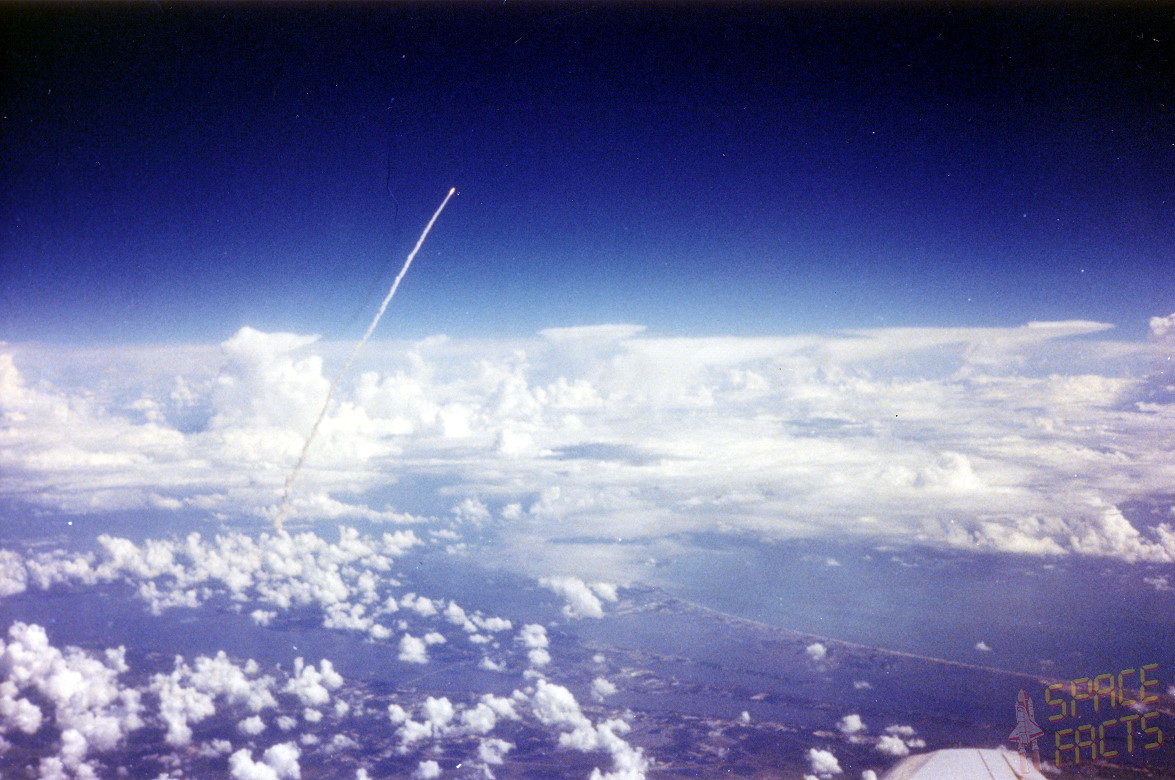
At T-31 seconds, control of the countdown was handed over from the Ground Launch Sequencer (GLS) to Discovery’s on-board computers and at T-6.6 seconds the process of igniting the three main engines got underway. With crisp perfection, the shuttle flexed its muscles and at T-0, at 11:38 a.m. EDT, the twin SRBs ignited—to an excited “…and liftoff…Liftoff, Americans return to space as Discovery clears the tower” from the launch commentator—kicking off the first piloted U.S. space mission in almost three years.
“No matter how many times you ride this rocket, you’re always a bit taken aback by the ignition of the solid rocket motors,” Covey remembered later. “It’s quite a ride.” Ascent was nominal, save for a few minor issues, outlined in NASA’s post-flight anomaly report. A gaseous oxygen flow control valve on one of the main engines took a little longer than expected to open and an Auxiliary Power Unit (APU) transducer failed. However, as the crew and spectators ticked off the milestones of flight, the major psychological barrier was crossing the 73-second threshold at which Challenger had been lost. When the fateful “Go at throttle up” call came from Capcom John Creighton in Mission Control, Hauck responded—perhaps not wanting to mimic his predecessor, 51L Commander Dick Scobee—with a clipped “Roger, Go!”
Years later, Covey remembered looking at the instrument panel as the Mission Elapsed Time clock ticked past T+88 seconds. “We’re all kind of thinking about what happened the last time the Space Shuttle had gotten to that point,” he noted, grimly. The twin SRBs separated on time, at two minutes, and Discovery flew onward for a further six minutes, until Main Engine Cutoff (MECO). At 11:46 a.m. EDT, precisely on time, the sound of the engines died and the ghost of Challenger was finally laid to rest.
FOLLOW AmericaSpace on Facebook and Twitter!
.




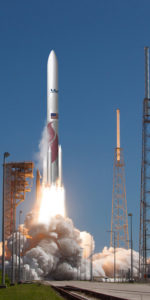
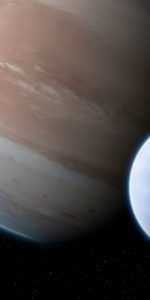
I hope a follow-on article discusses how this was almost a LOC catastrophe owing to a foam loss.